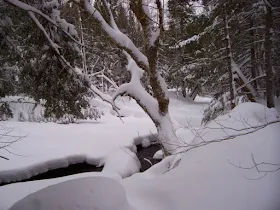 |
| If you see this symbol on food packaging, or on the shelf by the food (or if the food is glowing),... don't buy it. |
Don't think you have had enough radiation exposure already in your lifetime? Don't think that medical exposure through X rays and other diagnostic procedures have given you enough? How about Chernobyl or Fukushima fallout? Or the global effects of thousands of nuclear bomb tests? Or natural radon gas in your basement?
Still not enough? You want more? Someone must be asking for more, because that is what we are getting. Now the industrial food industry is giving you a dose, and wants to give you more. Yes, right in the foods you eat every day.
Would you like a bit of cancer with those irradiated fries?
Over the weekend I was reading that my government has just approved ground beef for the irradiation process, and Health Canada would like Big Meat to consider other products for the same treatment. I don't eat meat, so didn't feel affected.
However, my false sense of security evaporated quickly with a bit more research.
I found out that irradiation is already used in Canada to treat foods like potatoes, onions, wheat, flour, spices and some seasonings. In this nuclear attack on our food, industrial food processors bomb their products with radiation in order to kill bacteria and parasites, and extend shelf life.
Dr. Samuel Epstein, chair of the Cancer Prevention Coalition, is quoted as saying, "Every man, woman and child who takes a bite of irradiated food increases their chance of getting cancer. It is no exaggeration to say that our government has turned people into guinea pigs."
But it will increase profits, so it is approved. Pure insanity and greed running rampant. It is as insidious as nuclear fallout. What we really need is to end industrial food processing, or at least clean up this notoriously dirty and unsustainable method of food production so that blasting our food with radiation does not even need to be considered.
 |
| Eat me! I'm radioactive. |
By this time, everyone who should know does know, unless they are in deep denial, that there is no safe level of radiation. Period. Radiation kills.
It may kill slowly, and you may not be able to conclusively link it back to a particular radiation exposure (that is the beauty of it for the whole nuclear industry), but it is a killer, and this has been known for many decades.
It is hard not to feel like there is some one, or some thing, consciously trying to kill me. And you. But we can fight back.
Organic products can not be irradiated. Food you grow yourself, or is grown sustainably by people you know, is also a good bet. It will contain radiation from many of the sources listed above, but at least it won't have more added to it just before you and your family consume it.
In Canada irradiated products are supposed to show the benign looking symbol that appears to be similar to something good and green, like recycling. Don't be fooled. Such products should have to sport the truth, which would be something more like the international symbol indicating radiation danger.
With proper food growing, processing and handling, irradiation is not required. At all. Ever. No thank you - I do not want an increased risk of cancer with my meal.
 |
| The truth about irradiated foods. Danger! |
1. Irradiation damages the quality of food.
2. Irradiation produces toxic byproducts in the food.
3. Irradiation using radioactive materials is an environmental hazard which exposes workers and consumers unnecessarily.
4. Irradiation is a quick fix with long-term consequences.
5. Irradiation doesn't solve the problem, it just covers it up.

















